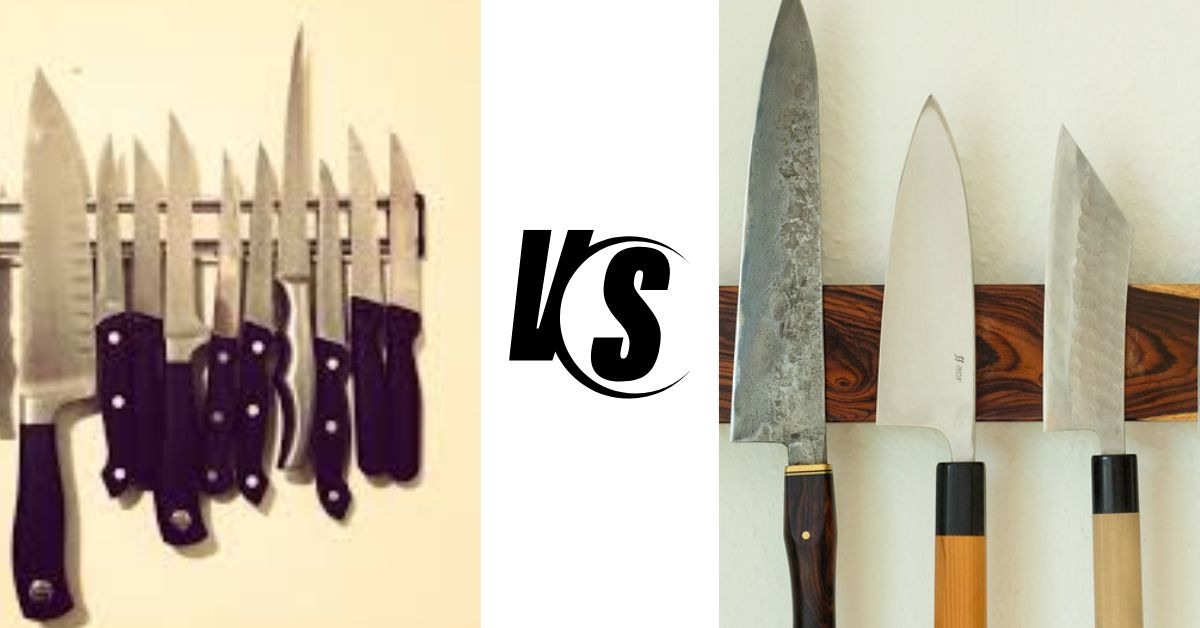When it comes to kitchen organization and keeping your knives safe and accessible, two popular options come to mind: magnetic knife holders and traditional knife blocks. Both have their merits, but which is better suited for your needs? In this guide, we’ll explore the pros and cons of each to help you make an informed decision.
Magnetic Knife Holders: A Modern Solution
A Magnetic Knife Bar, also known as a magnetic knife strip or magnetic knife rack, is a sleek and space-saving kitchen accessory designed to hold knives in place securely using strong magnets. These holders are typically made from stainless steel or wood and can be mounted on walls or countertops.
Advantages of Magnetic Knife Holders
-
Space-saving: Magnetic Knife Organizers free up valuable counter space, making them ideal for small kitchens or those with limited storage options.
-
Easy accessibility: With a Magnetic Knife Mount, your knives are always within arm’s reach, making meal prep more efficient.
-
Visibility: Unlike traditional knife blocks, which conceal the blades, Magnetic Knife Bar displays your knives, allowing you to identify the ones you need quickly.
-
Hygiene: Because the blades are exposed, Magnetic Knife Organizers are more accessible to clean and maintain than traditional knife blocks, reducing the risk of bacterial growth.
Disadvantages of Magnetic Knife Holders
-
Limited capacity: While the Magnetic Knife Bar can accommodate several knives, it may not suit large knife collections or specialty knives with bulky handles.
-
Potential for damage: If not installed correctly or if knives are mishandled, there is a risk of scratching or damaging the blades on the magnetic surface.
-
Aesthetic preference: Some prefer a knife block’s traditional look over a magnetic holder’s modern aesthetic.
Traditional Knife Blocks: Classic and Functional
A traditional knife block is a countertop storage solution that holds knives vertically within slots or compartments. These blocks are typically made from wood, plastic, or metal and come in various sizes and designs to suit different kitchen aesthetics.
Advantages of Traditional Knife Blocks
-
Versatility: Traditional knife blocks can accommodate a wide range of knife sizes and shapes, including specialty knives and those with thicker handles.
-
Stability: Knife blocks provide a stable base for storing knives, reducing the risk of them tipping over or falling out.
-
Protection: Traditional knife blocks encase blades within slots, helping to protect them from damage and maintain their sharpness for longer.
-
Aesthetic appeal: Many people appreciate the classic look of a wooden knife block as a timeless addition to their kitchen decor.
Disadvantages of Traditional Knife Blocks
-
Limited visibility: Unlike Magnetic Knife Bar, traditional knife blocks conceal the blades, making it harder to quickly identify the knife you need.
-
Hygiene concerns: Dust, debris, and moisture can accumulate inside knife block slots, potentially leading to bacterial growth if not cleaned regularly.
-
Bulky: Knife blocks can take up a significant amount of counter space, which may be better for smaller kitchens or those with limited workspace.
Which Option Is Better for You?
Considerations for Choosing Between Magnetic Knife Organizer and Traditional Knife Blocks:
-
Kitchen space: If you have a small kitchen or limited counter space, a Magnetic Knife Mount may be the better option for maximizing space efficiency.
-
Knife collection: If you have a large collection of knives or prefer to keep specialty knives within easy reach, a traditional knife block with multiple slots may be more suitable.
-
Aesthetic preferences: Consider your kitchen’s aesthetic and personal style when choosing between a modern magnetic holder or a classic knife block.
-
Hygiene and maintenance: Think about your cleaning habits and whether you prefer the easy maintenance of a magnetic holder or the enclosed design of a knife block.
-
Budget: Magnetic Knife Bar and traditional knife blocks vary in price, so consider your budget when deciding.
Tips for Using Magnetic Knife Holders
-
Proper installation: Use appropriate hardware to secure your Magnetic Knife Organizer to the wall or countertop. Follow the manufacturer’s instructions for the best results.
-
Spacing: Leave enough space between each knife to prevent them from touching and potentially damaging the blades.
-
Regular cleaning: Wipe down your Magnetic Knife Bar regularly with a damp cloth to remove dust and debris. This will help maintain its appearance and prevent buildup.
-
Avoid mishandling: Avoid placing or removing knives from the holder to avoid scratching the blades or damaging the magnet surface.
Tips for Using Traditional Knife Blocks
-
Proper placement: Position your knife block away from sources of heat and moisture to prevent damage to the blades and wood.
-
Cleaning: Periodically remove all knives from the block and clean both the slots and the knives themselves to prevent bacterial growth and maintain hygiene.
-
Knife organization: Arrange your knives in the block according to size and frequency of use for easy access.
-
Rotation: Rotate your knives regularly to ensure even wear and maintain their sharpness over time.
Conclusion
Whether you opt for a Magnetic Knife Bar or a traditional knife block depends on your preferences, kitchen layout, and storage needs. Both options offer unique advantages and considerations, so weigh the pros and cons carefully to determine the best fit for you. Whether you’re a minimalist home cook or a culinary enthusiast with a vast knife collection, there’s a solution to keep your kitchen organized and your knives safe and accessible.

